15 must-see locations in Budapest, part 2
Hello again everyone!
As I said to you in my last post about Budapest, I want to talk to you about my visit to the city and the places that I consider must-visit locations for all that I had the opportunity to discover of it. I have already spoken to you about quite a few in the first part of this post, but I still have some more, so... here we go!
Széchenyi Thermal Bath
This thermal bath was built in a neo-baroque building which is a century-old is one of the best medicinal baths in Europe. The aesthetic of the building makes this experience incredible, with its yellow walls contrasting with the blue colour of its waters.

There are three big pools outside and fifteen inside, as well as a sauna and Turkish baths.
It is great to go in the middle of winter when outside there is a biting cold and then you go into the30 degrees Celsius waters... the contrast is incredible.
Saying that, in some pools the water was more or less warm and in others the temperature was especially high which was hard to tolerate for a lot of time. So there is always steam, especially at night. Others, however, have the perfect temperature, and it will make you want to spend your entire day in the waters.
The truth is that we spent most of our time in the outside pools. One of the three pools is exclusively for swimming, so you have to wear a swimming cap. We were alternating between the other two pools.
In the pools, it is interesting to see the old Hungarians playing chess inside the pool. In one of them, there was also a kind of circle where the current would bring you around and we spent a good amount of time mucking around there. Inside, there is a jacuzzi which is perfect to relax while you have a hydromassage, even though when we went it was always full of people.

The entrance costs 17 euros and there is not a time limit, which is really great. Saying that, we were only there for a couple of hours because we wanted to make the most of the rest of the day to visit other places in the city.
Really nearby to the baths is the Szechenyi park, where you can visit a really pretty castle, and also the park is full of ponds and hidden corners with charm.
To get to the Szechenyi Baths, you just have to take the metro which leaves you really close by to the entrance, specifically the stop Szechenyi Furdo. You can also go by foot, but depending on which area of the city you find yourself in, it could take you a long time to get there.
Buda Castle
It is also known as the Royal Palace since here is where the former kings of Hungary used to live, it is a big castle which is visible from almost all of the points of the city as it is on top of a hill in Buda. Therefore, from here you can experience a perfect panoramic view of the city. It is another one of the places in the city which has been declared a World Heritage Site by Unesco.
It was built in the 14th century but, like lots of other buildings in the city, during the Second World War it was practically left in ruins and it was rebuilt after.
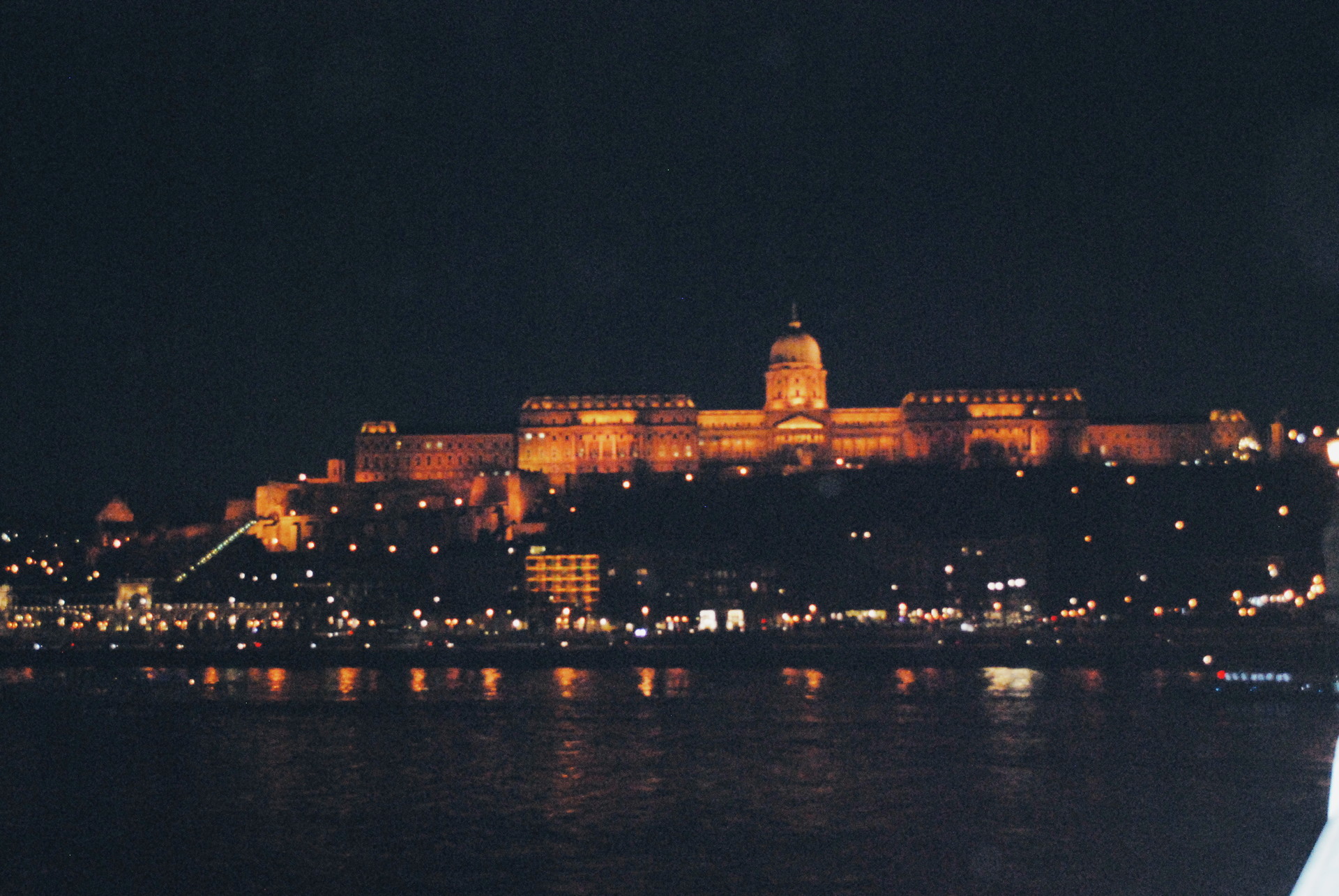
You can go up to it via cable car but we decided to go up by foot to enjoy the route. It is true that it was a little bit hard, but it was worth it for the views of the city. Also, in the surrounding areas by the castle, there are various alleyways that have charm and different shops.
You can also visit the inside, since there is the National Library, the National Gallery of Hungary and the History Museum of Budapest. We weren't really interested in visiting any of them so we simply enjoyed the area and the views, and then went back down again.
Váci Utca
This pedestrianised street is perfect for eating or going shopping, as it is full of restaurants and shops. It is one of the most walked on streets in the city, if not the most walked on, as it is the most important shopping street in the whole city.
On one end of the street you can find the Vorosmarty Square where you can again find a big array of shops and bars, and above all, a great atmosphere. Whilst on the other end there is the Central Market of Budapest which I will talk to you about now.
Central Market
This market is the biggest and most well-known out of all of the markets in the city. It is located in an incredible and enormous building which is split into two floors. Inside, you can find all of the fruit, spice and food stalls, etc., while the upper floor is more dedicated to selling souvenirs and there are also bars and restaurants.
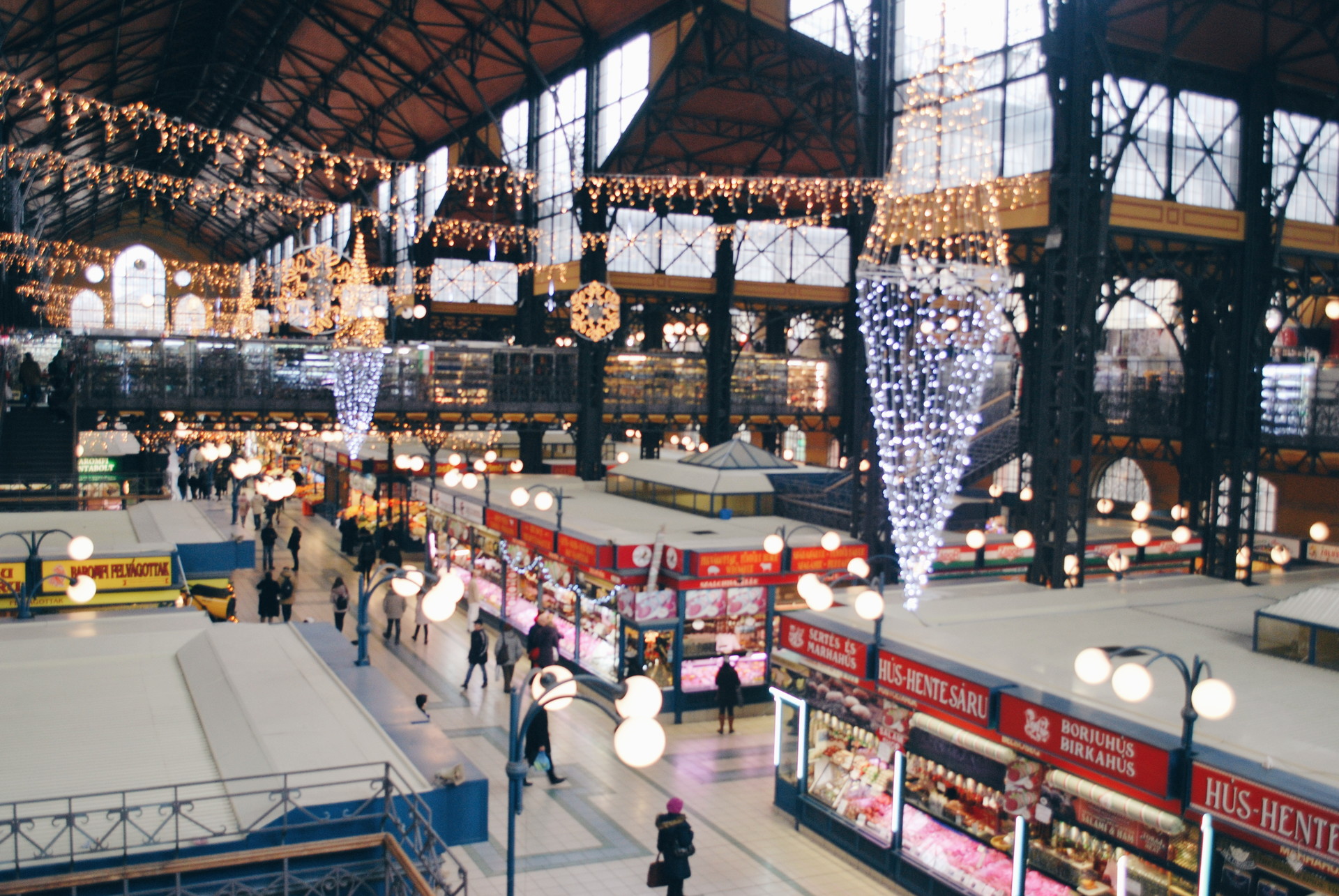
Even though it is true that there a quite a few tourists that visit this market since it is becoming more and more famous; it is a good place where you can learn about the culture of the country, because on the ground floor you can try lots of local delicacies.
But the thing that will probably catch your attention the most, as it did for me, is the amount of dried paprika that you will find at the different stalls, and it is because it is one of the typical products of the country and used the most in cooking. In fact, it is really common to come across souvenirs where the main thing is paprika.
However, on the upper floor, there is a bit of everything. From the more mythical and thought about souvenirs, especially for tourists, to other types of souvenirs that have more charm and personality.
The market is located only a stone's throw away from the Szabadasag Bridge.
Szabadasag Bridge
This is another very important bridge in the city, along with the Chain Bridge. In fact, they are separated by the Elizabeth Bridge. Personally, out of the two bridges, I like this one the most, maybe because it was the first one that I saw and I fell in love with it.
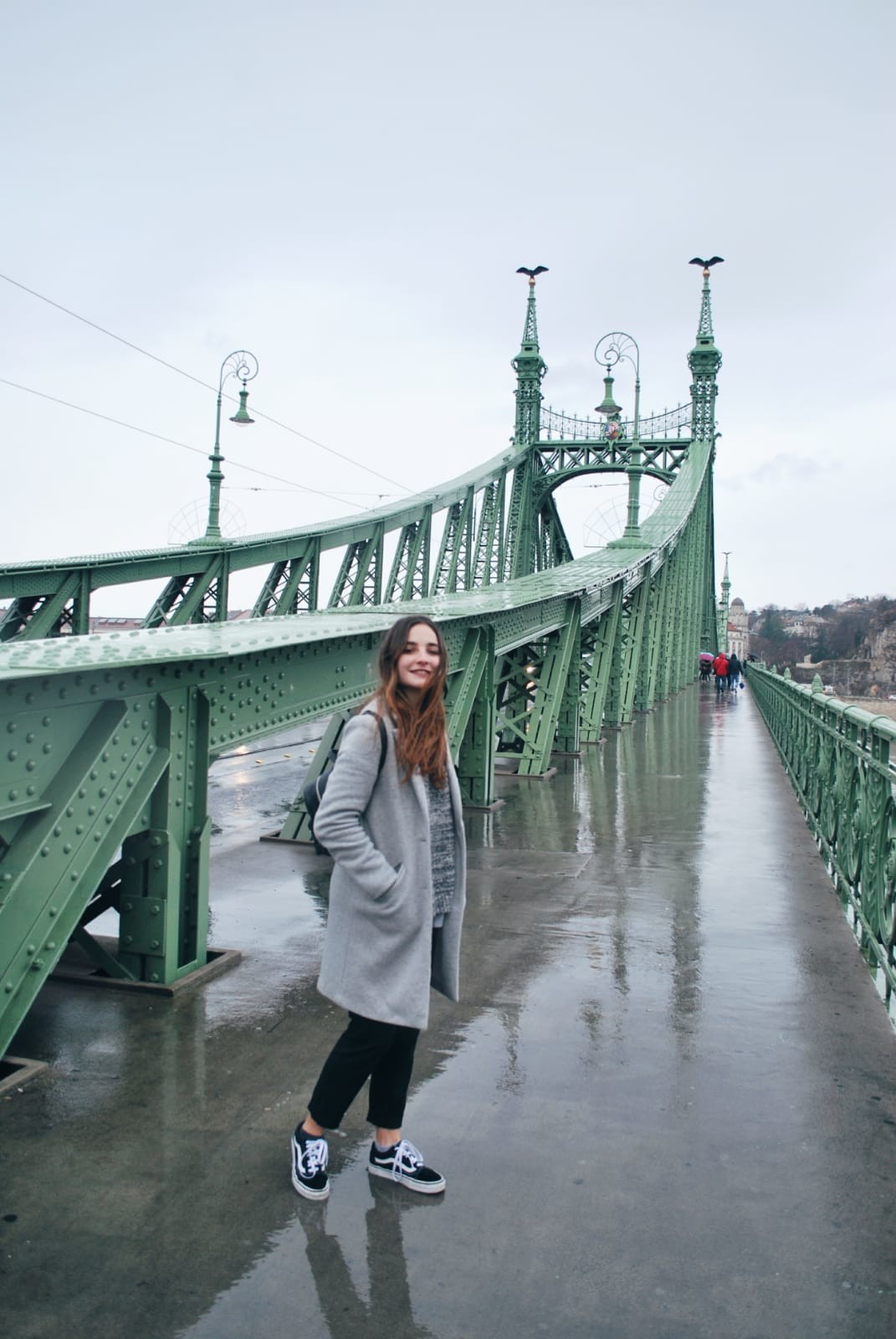
It has a length of more than 30
0 metres and both cars and the tram go along it which go around the city, with the pedestrians at the sides.
It was built at the end of the 18th century and it is eye-catching because it is in a modernist style and it is built out of metal. It is also topped by a Turul which represents a bird from the Hungarian tradition. It is said that when you cross it, you ask a wish and it's granted.
We only crossed it during the day, so I don't know what it would be to look at it in the night when it is all lit up.
Once we crossed this bridge, already in Buda, we started to go up the incline and slowly observe the city from the top. The views from this bridge are unbeatable.
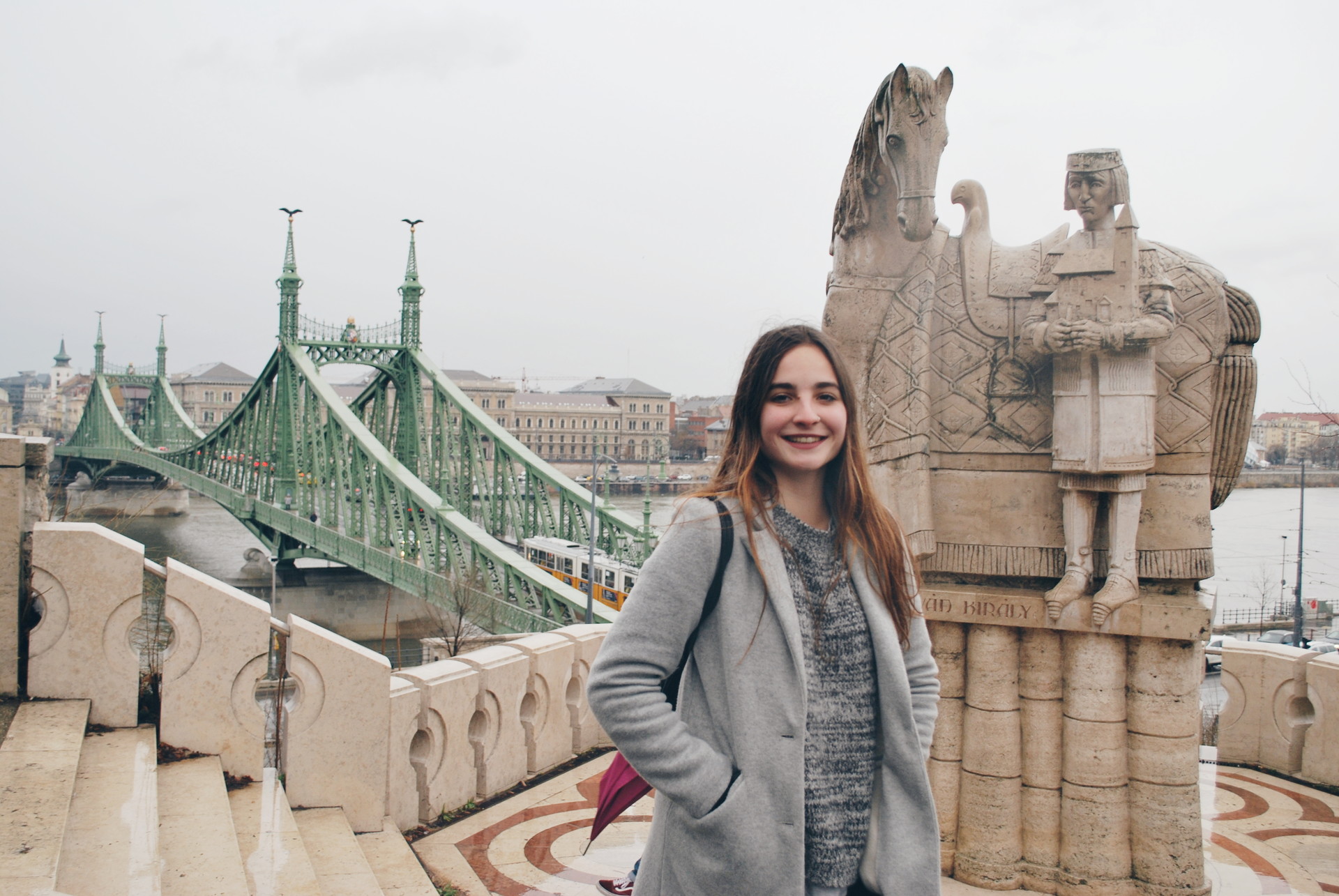
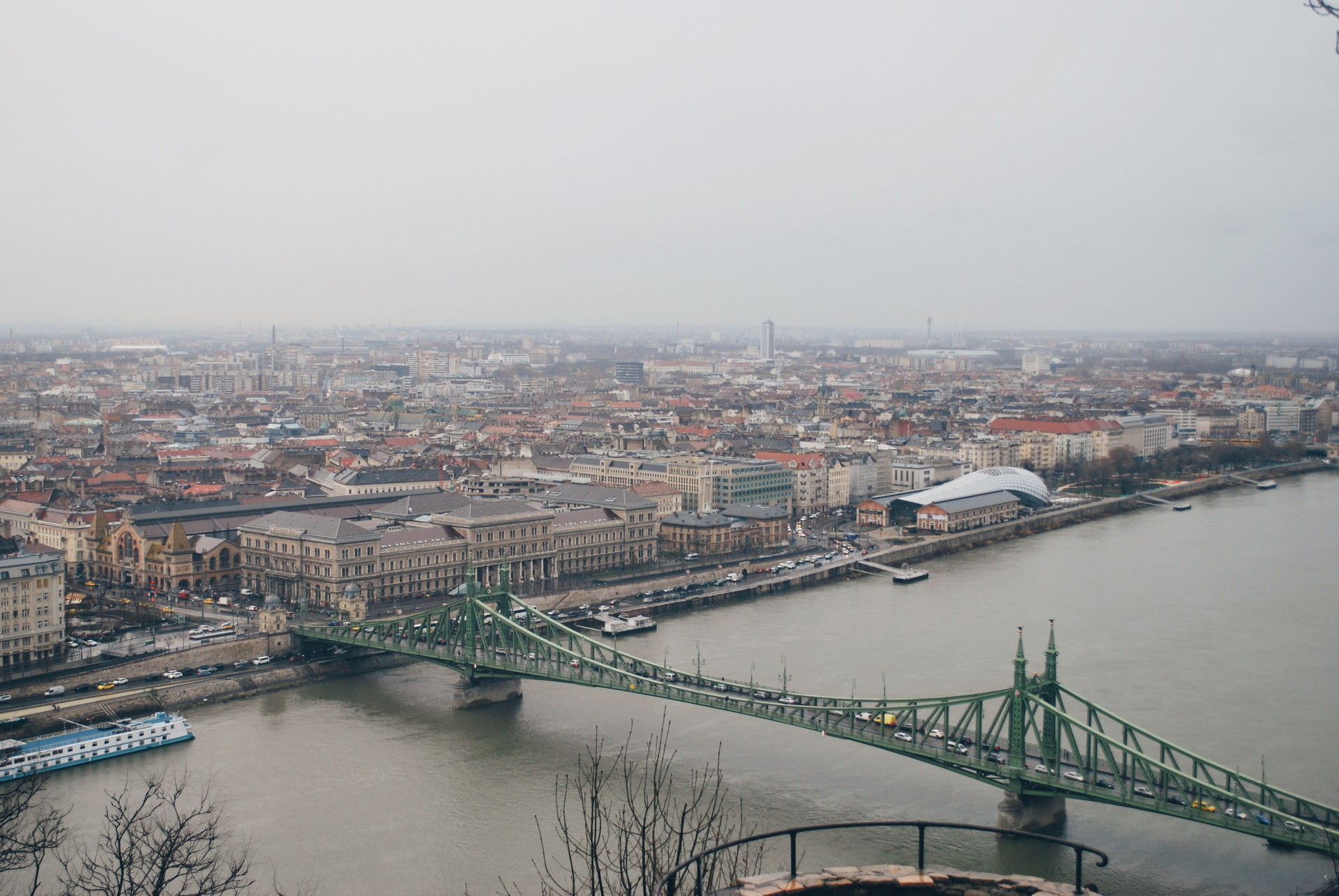
Budapest Synagogue
This impressive building in Morisco style, built out of red and yellow bricks, is the second biggest Jewish synagogue in the world (it seems that all the buildings in the city stand out for being big, right? ).
It is located in the Jewish neighbourhood in the city. And Hungary was one of the countries that most suffered from the events of World War 2. So, hundreds and hundreds of Jewish people could be found in this neighbourhood; apart from the rest of the people in the city, in scarcely livable conditions, with hardly any access to food or medical attention
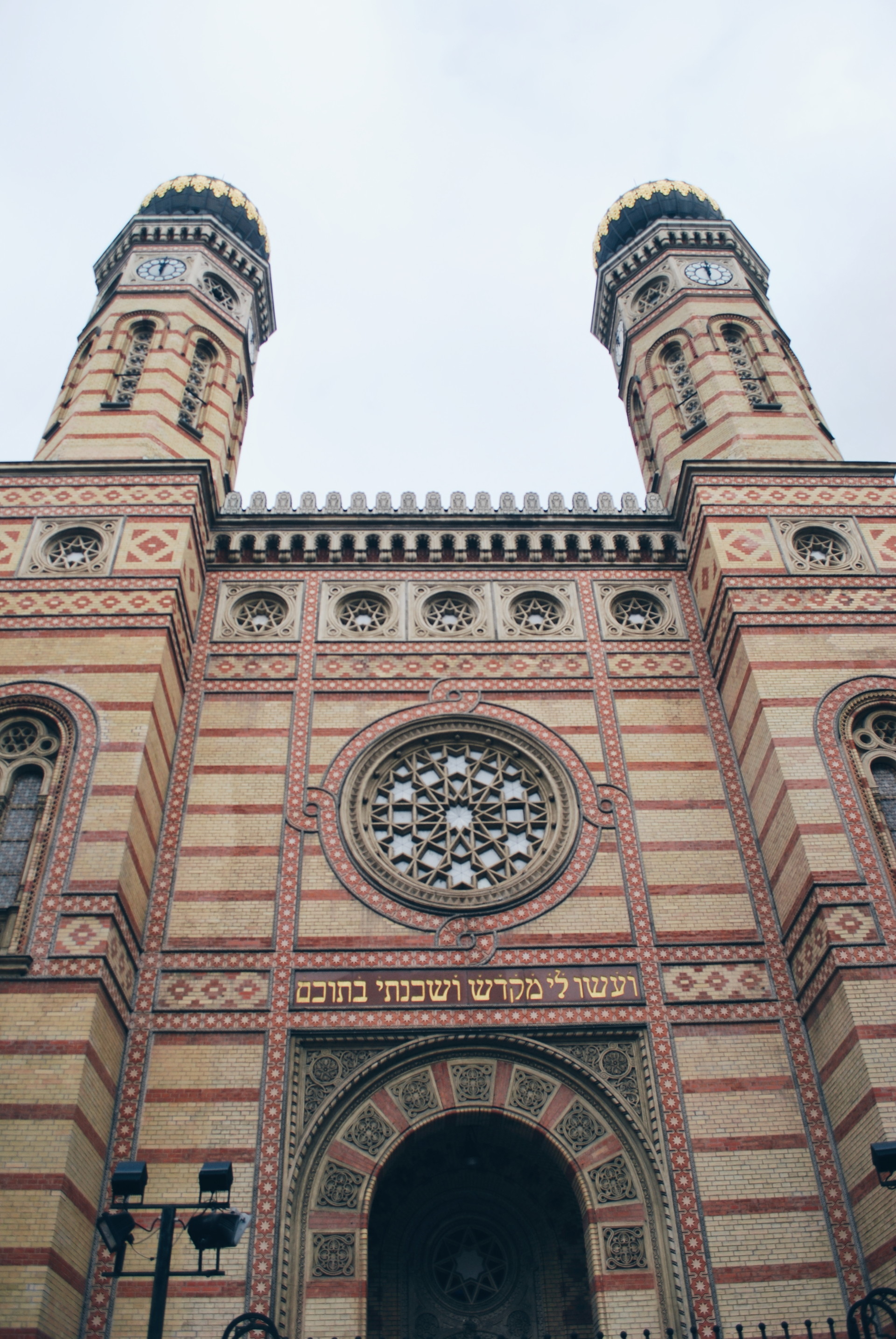
We thought quite a lot about whether to go inside or not, but finally, we decided that we could not miss out on the opportunity as we were in the city and we didn't know when we would be able to next return.
To enter, you have to pay almost 10 euros, if I remember rightly, and it is also possible to get a guided visit which is available in different languages. We visited the synagogue for free, although going with a guide is always the better way to learn the history.
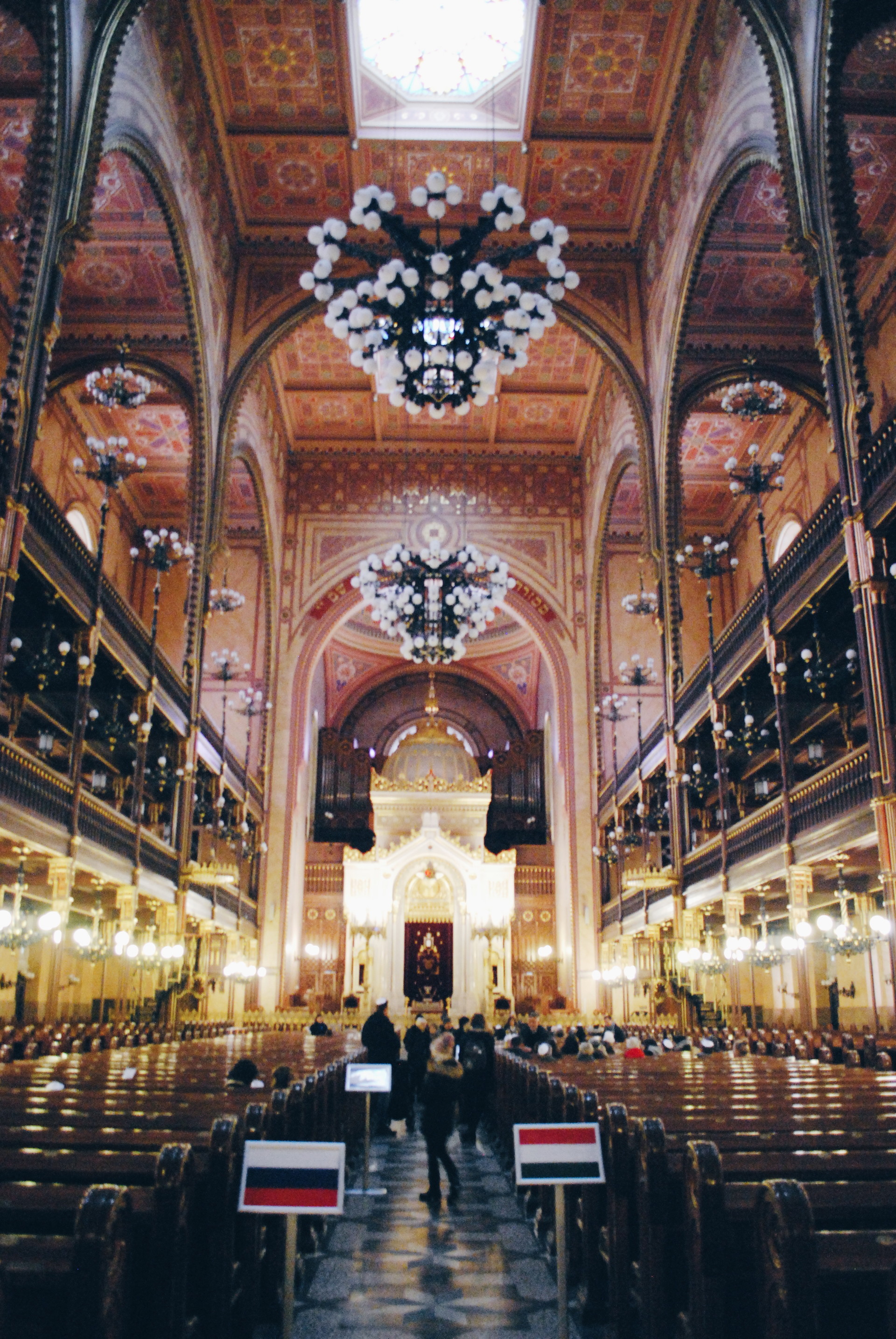
Saying that, thanks to a leaflet that they gave us at the entrance, and through the visit, we were able to find out something about the sad history of the city due to the Holocaust. We saw this first hand at the end of the visit, when we saw a kind of cemetery which was attached to the synagogue, which is quite unusual.
This cemetery was built to commemorate the death of around 2, 000 people in this neighbourhood, which was due to the cold and the conditions that the population faced here. Being separated from the rest of civilisation, they decided to build the cemetery there.
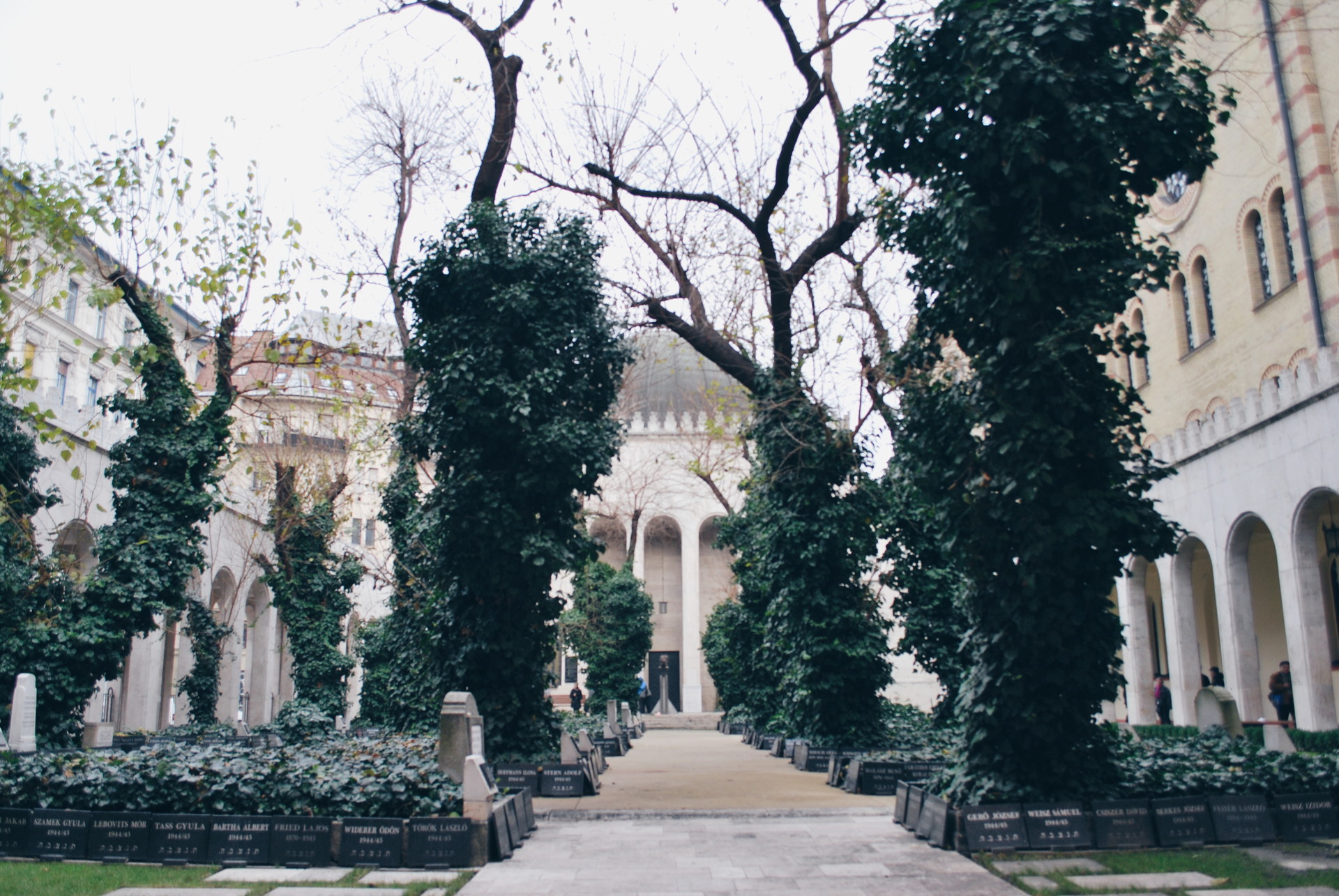
Finally, we visited a kind of willow tree known as the "tree of life" to commemorate the victims of the Holocaust. It is super interesting because on each one of the leaves, one of the victims' names are written.
Av. Andrássy
This is another one of the most famous and walked on streets in the city but in this one, however, you can find the high-end brand shops like Armani or Dolce and Gabanna. It is no less than 2. 5 km long and it was built between 1872 and 1885.
Even though we didn't hope to buy anything in any of these shops, it is interesting to walk along this street, as in it you can find really pretty buildings where the most well-off families live, as well as the most important ones; where the most eye-catching thing is definitely the incredible Opera Palace.
And the most interesting thing, I believe that I had never gone along a main street that had been declared a World Heritage Site by Unesco like in Andrassy's case.
At the end of this avenue, you can find the Heroes Square which I will describe to you now, and which is dedicated to those who thought for the freedom of Hungary.
Heroes Square.
As I told you, this square is located at the end of Andrassy street and it also isn't very far when walking from the Chain Bridge. It is also known as the Millennium monument, and in fact, this had been the other place in the city which was declared a World Heritage Site by Unesco. It was built between 1896 and 1926.
It is a monumental complex, due to it having statues of the seven chieftains of the Magyars which are in the central part and who founded Hungary (the same ones who I mentioned when I talked about the Fisherman's Bastion). This is why it is one of the most important squares in the city.
Just behind you can find the most popular park in the city where the main thing that stands out is the Vajdahunyard Castle.
This has been everything! I hope that you enjoyed getting to know more about this incredible city.
Thank you, everyone, for reading my blogs once again!
Photo gallery
Content available in other languages
Want to have your own Erasmus blog?
If you are experiencing living abroad, you're an avid traveller or want to promote the city where you live... create your own blog and share your adventures!
I want to create my Erasmus blog! →

























Comments (0 comments)